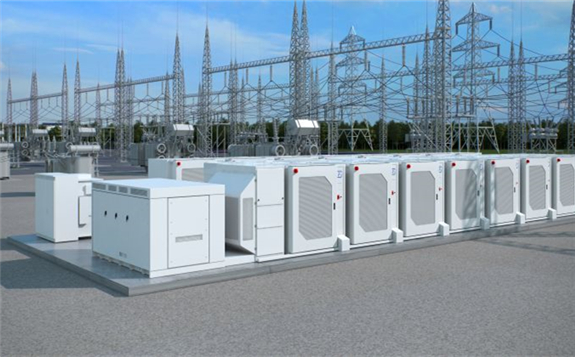Fluence is launching the sixth generation of its integrated grid storage product and has already signed orders for 800 megawatts/2,300 megawatt-hours.

The new version comes in a 10-foot cube shape, which the company plans to use as the building block for storage plants small and large, in place of the long rectangular containers from previous iterations. The first installations will happen by the end of the year, COO John Zahurancik said in an interview.
The 800-megawatt roster of orders, which amounts to considerably more than all the grid storage installed in the U.S. in 2019, comes from Enel, LS Power, sPower and Siemens. Fluence declined to specify where these projects are located, other than that they span North America, Europe and Asia. The new purchases bring Fluence’s tally of built or contracted storage capacity to 2.1 gigawatts.
The new product marks the first new addition since Fluence formed as a joint venture between AES and Siemens in 2018; AES Energy Storage had previously developed the Advancion product. It follows similar product updates from other leading storage integrators, including Tesla’s Megapack and Powin Energy’s BESS.
NEC Energy Solutions went a different route; its parent company decided last week to wind down operations rather than invest in technological advancement.
Fluence shifts labor from field to factory
The sizing of Fluence's new product is such that a commercial or industrial customer could buy just one cube to meet its needs, while a major front-of-meter project could fill a field with them. That flexibility foreshadows an expanding addressable market for Fluence, which previously focused on supplying some of the largest battery projects in the world.
“If you want to be a player in this field, you've got to continue to move forward,” Zahurancik said. “Instead of these large containers that are difficult to transport, we can build this replicable form factor over and over again.”
The design shifts labor from the field to the factory, where more systems and quality checks will take place than with previous generations. Fluence used to install batteries into enclosures onsite; the cube will ship with batteries already assembled, eliminating the variables that arise from installation in the field.
The storage integration team at GE similarly touted factory-installed batteries when it launched its Reservoir storage product in 2018. The company said at the time that prepacking the batteries could cut installation times in half.
Fluence has also rolled out new software offerings to control individual system operations and dispatch fleets of batteries. But the company is maintaining its technology-agnostic stance. Fluence is happy to integrate third-party storage software, Zahurancik said, if, for instance, there are opportunities to cross-sell or if a customer approaches with a favored software provider already in mind.
The company previously said it had updated battery controls for enhanced safety following an investigation into the explosion at a battery the company supplied in Arizona in April 2019. The investigation, led by utility Arizona Public Service, is still ongoing, more than a year after the incident.